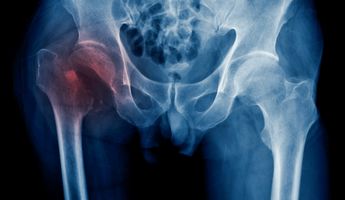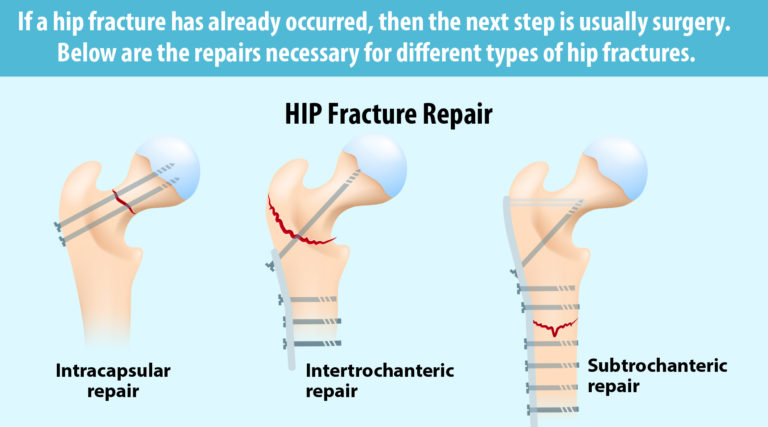Hip Fracture Surgery in Mexico
Search and Compare the Best Clinics and Doctors at the Lowest Prices for Hip Fracture Surgery in Mexico

Find the best clinics for Hip Fracture Surgery in Mexico
No pricing info available
Turkey offers the best prices Worldwide
Price: $ 218
From 1 verified reviews
Elizabeth Miranda, 25 December 2019
Warm and professional attention excellent surgeon
From 17 verified reviews
Lua Beha, 17 September 2020
He acudido a este centro y me ha atendido el doctor Francisco Aguirre. He estado en centros médicos por todo el mundo y debo decir que la atención que he recibido ha sido excepcional. Quizás la mejor que he tenido nunca. El doctor Francisco Aguirre es todo un profesional, no habían prisas y mostró un interés real en mi dolencia y en querer ayudarme a curarme.Escuchó lo que me pasaba y me explico paso por paso con todo detalle de como iba a proceder. La verdad es que me he sentido segura y que podía confiar plenamente en él. Soy extranjera e iba con mis reservas con ser estafada pero he tenido una grata sorpresa. Recomiendo este centro totalmente y especialmente a este doctor. If you are not from Mexico and need a doctor don’t hesitate to visit this center. Specially doctor Francisco Aguirre. I had an encapsulated infection on my neck and after calling different doctors ( who asked me hundreds of dollars do drain it just because they knew I wasn’t local ) I found this center and just decided to go as I was in severe pain. The doctor was very warm and welcoming. He was not rushing and explained me step by step what he was going to do. Also gave me some great tips about where to buy my meds etc. I have lived in different countries and I must say that this is be best doctor I have ever dealt with. Very human and he truly cared. I totally recommend him.
Piedica, located in Diego Rivera, Tijuana, Mexico offers patients Hip Fracture Surgery procedures among its total of 61 available procedures, across 1 different specialties. Currently, there's no pricing information for Hip Fracture Surgery procedures at Piedica, as all prices are available on request only. All procedures and treatments are undertaken by just a small team of specialists, with 2 in total at the Hospital, and they are not accredited by any recognized accreditations institutes
Dr. Victor Lopez Valerio, located in Calle Ecuador, Monterrey, Mexico offers patients Hip Fracture Surgery procedures among its total of 61 available procedures, across 1 different specialties. Currently, there's no pricing information for Hip Fracture Surgery procedures at Dr. Victor Lopez Valerio, as all prices are available on request only. All procedures and treatments are undertaken by the lead specialist at the Hospital, and they are not accredited by any recognized accreditations institutes
- Home
- Mexico
WHY US?
At Medijump, we're making medical easy. You can search, compare, discuss, and book your medical all in one place. We open the door to the best medical providers worldwide, saving you time and energy along the way, and it's all for FREE, no hidden fees, and no price markups guaranteed. So what are you waiting for?

Free

Best Price

Widest Selection

Risk-Free
What you need to know about Hip Fracture Surgery in Mexico

Hip fractures are significant injuries, and their complications can be fatal. Internal screw repair, partial hip replacement, and complete hip replacement are the three basic types of hip fracture surgery. The extent and location of the fracture, your age, and any underlying medical issues will all influence the sort of surgery you require.
Older patients typically have the procedure due to their higher risk of hip fractures brought on by osteoporosis and other disorders. The degree of the fracture, the person's overall health, and whether the procedure is required must all be determined through a thorough diagnostic process that includes bone scans and magnetic resonance imaging.
What is the cost of Hip Fracture Surgery in Mexico?
Pricing for Hip Fracture Surgery in Mexico can fluctuate greatly due to multiple contributing elements. These embrace the severity of the break, pre-existing medical conditions, and the age of the sufferer. Another significant factor is the charges imposed by the medical experts working on the procedure, which might incorporate the surgeon's payment, dues from the anesthesiologist, and costs associated with post-operative care.
It's essential to mention that several insurance firms might subsidize a segment of the therapeutic charges. Therefore, having a sound understanding of your insurance benefits and discussing them with your medical provider is crucial. In addition, some healthcare facilities might propose adjustable payment schemes to cater to patients with diverse financial abilities.
What does a Hip Fracture Surgery Procedure Involve?
The process of the Hip Fracture Surgery encompasses various stages such as preliminary preparations prior to surgery, the actual surgical procedure, and care after the operation. In the initial stage, the medical professional employs tools for diagnosis such as computed tomography scans and radiographic imaging to determine the severity of the bone break and devise the most fitting surgical strategy.
If you undergo internal repair using screws, your surgeon inserts metal screws into the bone to hold it together while the fracture heals. With a total hip replacement, your surgeon replaces the upper femur and the socket in your pelvis with prostheses, while with a partial hip replacement, your surgeon only replaces the head and neck of the femur with a metal prosthesis. All of these types of hip fracture surgery are performed under general or spinal anesthetic.
How Long Should I Stay in Mexico for a Hip Fracture Surgery Procedure?
Length of residence in Mexico for a Hip Fracture Surgery can differ due to several elements, encompassing the patient's general wellbeing, the intricacy of the operation, and recovery rate. You may need to stay in the hospital for four to eight days after the surgery. Therefore, you generally should plan to stay in Mexico for around 10 to 14 days or until your surgeon says it is okay for you to travel home as sitting too long can be uncomfortable for you. Throughout this time, healthcare personnel diligently check the patient's level of discomfort, wound healing progress, and physical recuperation
What's the Recovery Time for Hip Fracture Surgery Procedures in Mexico?
The recovery period depends on which type of hip fracture surgery you underwent. In general, you may be able to return to some light activities within three to six weeks. You should be able to do most of your regular activities, such as taking long walks and exercising, within ten to twelve weeks. However, the total recovery period may take as long as six to twelve months. With the passage of time, individuals' efforts are centered on enhancing muscle strength and improving equilibrium, all aimed towards achieving self-reliance
What sort of Aftercare is Required for Hip Fracture Surgery Procedures in Mexico?
Post-treatment care after a Hip Fracture Surgery is a pivotal part of the recovery process. This commonly involves consistent check-ups with your medical specialist, pain control measures, rehabilitative exercises, and occupational therapy. Keeping a direct channel of communication with your healthcare provider during this time is key to monitor progress and swiftly address any possible complications. Equally significant is following changes in lifestyle, such as nutritious eating and regular physical activity, to boost healing and promote overall well-being.
Additionally, modifications in your home environment might be necessary to promise safety and ease of movement throughout your convalescence. This could involve setting up support rails, utilizing an elevated toilet seat, and eliminating possible stumbling blocks. Your surgeon will recommend you to undergo physical therapy after the procedure, which focuses on your range-of-motion and strengthening exercises. You may also need to attend follow-up hospital checkups with your surgeon or your local doctor.
What's the Success Rate of Hip Fracture Surgery Procedures in Mexico?
The success rate of hip fracture surgery is around 90% to 95% after 10 years. However, it's imperative to understand that the surgical journey doesn't conclude with the operation itself. Success of a surgical procedure is contingent on a meticulously planned and executed post-surgery care regime, incorporating elements like physical therapy, pain control, and alterations to lifestyle such as embracing a nutritious eating routine, consistent exercise, and forgoing detrimental habits like smoking that may impede recovery and overall health.
Bear in mind, everyone's surgical journey is distinctive. Though a high overall success rate may instill confidence, it's vital to confer with your healthcare provider about your individual prognosis and anticipated outcomes to establish practical expectations and create a tailor-made treatment and post-surgery care strategy.
Are there Alternatives to Hip Fracture Surgery Procedures in Mexico?
There exist several alternative methods to Hip Fracture Surgery, contingent upon the specific nature of the fracture and the patient's comprehensive health condition. Non-invasive treatments could encompass pain management, physiotherapy, employing mobility aids, and taking medications such as bisphosphonates via intravenous (IV) tubing in the hospital. However, this is only recommended for people who are too frail to cope with surgery (those with severe health issues). Occasionally, a less invasive surgical approach may replace traditional hip fracture surgery, contingent largely on the depth and site of the fracture.
What Should You Expect Before and After the Procedure
Before commencing a Hip Fracture Surgery, a preliminary surgical assessment will be conducted to determine your overall health state and preparedness for the procedure. During this stage, it's important to engage in a thorough discussion with your surgeon about your current medications and any existing health issues. Take this opportunity to ask all the questions you have about the procedure to get a clear understanding of the process and to set achievable expectations.
Post-surgery, you will likely stay in the hospital for few days for observation and pain management. Physiotherapy sessions will commence at the earliest feasible time to aid in regaining your mobility. Upon discharge, adherence to your surgeon's directives − spanning wound care, management of pain, exercise routines, and dietary instructions - is critically significant to speed up your recuperation and prevent potential complications.
In terms of symptoms, before a hip fracture surgery, you may experience pain, bruising, and swelling and your movement may be very limited. After the surgery, all of the symptoms will no longer be there and you can move freely.
What are the Potential Risks of Hip Fracture Surgery?
This procedure is very effective, but there are some side effects and risks that come with it, such as:
- Infection at surgical site
- Blood clots
- Hip dislocation and loosening.
- Differences in leg length
- Reaction to anesthesia
- Nerve damage
Whilst the information presented here has been accurately sourced and verified by a medical professional for its accuracy, it is still advised to consult with your doctor before pursuing a medical treatment at one of the listed medical providers
No Time?
Tell us what you're looking for and we'll reachout to the top clinics all at once
Enquire Now

Popular Procedures in Mexico
Prices Start From $218

Prices Start From $218

Prices Start From $100

Prices Start From $2,050

Recommended Medical Centers in Mexico for Hip Fracture Surgery

- Interpreter services
- Translation service
- Religious facilities
- Medical records transfer
- Medical travel insurance
- Health insurance coordination
- TV in the room
- Safe in the room
- Phone in the room
- Private rooms for patients available

- Interpreter services
- Translation service
- Religious facilities
- Medical records transfer
- Medical travel insurance
- Health insurance coordination
- TV in the room
- Safe in the room
- Phone in the room
- Private rooms for patients available

- Interpreter services
- Translation service
- Religious facilities
- Medical records transfer
- Medical travel insurance
- Health insurance coordination
- TV in the room
- Safe in the room
- Phone in the room
- Private rooms for patients available

- Interpreter services
- Translation service
- Religious facilities
- Medical records transfer
- Medical travel insurance
- Health insurance coordination
- TV in the room
- Safe in the room
- Phone in the room
- Private rooms for patients available

- Interpreter services
- Translation service
- Religious facilities
- Medical records transfer
- Medical travel insurance
- Health insurance coordination
- TV in the room
- Safe in the room
- Phone in the room
- Private rooms for patients available

- Interpreter services
- Translation service
- Religious facilities
- Medical records transfer
- Medical travel insurance
- Health insurance coordination
- TV in the room
- Safe in the room
- Phone in the room
- Private rooms for patients available

- Interpreter services
- Translation service
- Religious facilities
- Medical records transfer
- Medical travel insurance
- Health insurance coordination
- TV in the room
- Safe in the room
- Phone in the room
- Private rooms for patients available

- Interpreter services
- Translation service
- Religious facilities
- Medical records transfer
- Medical travel insurance
- Health insurance coordination
- TV in the room
- Safe in the room
- Phone in the room
- Private rooms for patients available

- Interpreter services
- Translation service
- Religious facilities
- Medical records transfer
- Medical travel insurance
- Health insurance coordination
- TV in the room
- Safe in the room
- Phone in the room
- Private rooms for patients available

- Interpreter services
- Translation service
- Religious facilities
- Medical records transfer
- Medical travel insurance
- Health insurance coordination
- TV in the room
- Safe in the room
- Phone in the room
- Private rooms for patients available
Hip Fracture Surgery in and around Mexico
About Mexico
The Country of Mexico forms a part of the North American continent and lies directly south of the United States and is the fifth largest country in the Americas. It comprises 31 states and a Federal District. The capital of Mexico City lies in the Federal District. Mexico is dominated by several mountain ranges and the more well-known ones are the Sierra Madre Oriental and the Sierra Madre Occidental. It is famous for its amazing beaches, and the best-known Latin American pyramids include the Pyramid of the Sun and the Pyramid of the Moon at Teotihuacán in central Mexico,
Mexico ranks among the top five locales for medical tourism worldwide, consistently attracting those seeking not only medical care but luxurious, boutique-styled facilities for recovery as well. The distinct appeal to choosing Mexico as a destination for medical procedures is not solely based on the accommodation standards, but also the notably lower costs contrasted with those in the United States. With a price tag that usually amounts to 70-80% less than what you'd expect to pay in the US for the same procedure, it's no wonder why Mexico is such an attractive option for medical tourists.
In terms of the economic value, medical tourism in Mexico has proven to be no small industry. According to the data gathered in 2016, the industry is worth a whopping $4.8 Billion. Moreover, it is not an underused resource, as can be seen in the influx of medical tourists that the country welcomes each year. An astonishing 1 million individuals travel to Mexico annually, seeking different varieties of treatments and procedures.
Geographically, it's noted that the majority of these medical tourists hail from nearby US states. In fact, states that border Mexico, such as California, Texas, and Arizona, make up approximately 70% of the medical tourists that arrive in Mexico.
Tijuana, Cancun, Mexicali, and Monterrey are some of the more popular cities in Mexico for medical tourism and the flowing procedures:
- Dental treatments including dental surgery
- Plastic and Cosmetic Surgery
- Bariatric Surgery
- Other medical procedures like dermatology, orthopedics, gynecology, and ophthalmology.
Popular Parts of Mexico
Six Cities in Mexico that should be on your itinerary:
- Mexico City – This enormous capital city is the most populous city on the North American continent. The metropolitan area of the city is home to a staggering 21.2 million people. El Zocalo, the main public square is a famous landmark in Mexico City. It is also a UNESCO World Heritage site.
- Cancun –Is a major resort city with turquoise blue waters and striking white sandy beaches. It has a population of about 628,000 people. You can take day trips to the Mayan ruins, the unspoiled jungle habitats of Coba, and Chichen Itza from Cancun.
- San Miguel de Allende –Is one of the most popular cities in Mexico. The must-visit sites in this city are the San Miguel Arcangel Parish, the archaeological zone of Canada la Virgen, and the handicraft market.
- Guadalajara – It’s the second largest city in Mexico and has a population of 5.1 million. The city has a more relaxed feel and a distinctly Mexican flavor. The historic center is impressive with a cathedral and colonial architecture. Guadalajara Cathedral, Instituto Cultural de Cabanas, and the Expiatory Temple are famous sights to visit.
- Oaxaca – Is a southern Mexican city and is situated in a valley. It is home to 4.2 million inhabitants. Oaxaca Cathedral, Zocalo and Mercado Benito Juarez, and The Rufino Tamayo Museum are a few of the interesting places to see in this city.
- Tijuana – Is a border city in Mexico and shares its border with California. Because of its location, this city is very popular with American medical tourists. The Avenida Revolucion is the main street and is lined with Bars and Restaurants. Popular landmarks include Jai Alai Fronton Palace, Centro Cultural Tijuana, and Estadio Caliente. It has a population of 1.3 million people.
Other important cities are Merida, Acapulco, Puebla City, Taxco Puerto Vallarto, and Playa del Carmen.
Weather and Climate in Mexico
Mexico, in its vastness, doesn't possess a uniform climate throughout the nation. Various regions exhibit distinct weather patterns, which are inextricably linked to their geographical features. Given Mexico's immense size, it's unsurprising that the climate varies significantly across different locations. The periodic patterns across the nation are not homogenous, as one would expect in a smaller, less diverse country. Instead, Mexico’s topography, which is incredibly varied, heavily influences the country’s diverse weather and climate.
In terms of seasonality, Mexico traditionally experiences two major seasons - the rainy season and the dry season. Each of these seasons presents its own unique set of conditions and weather patterns, shaping the climate across the country in distinctive ways. The shifts between these periods of rain and periods of drought are quite pronounced, showcasing the climatic dualism that shapes the Mexican landscape. This cyclical pattern of rainy and dry seasons is a key part of Mexico's climatic identity, having profound effects on both its environment and the livelihood of its inhabitants.
- Rainy Season – Most of Mexico experiences rain from May to September or October. The weather is hot and humid in these months, especially in Southern Mexico. The average temperature in the summer months is around 83 degrees Fahrenheit. In winter, the temperature averages between 68- and 74 degrees Fahrenheit.
- Dry Season – October to May there is hardly any rain and it happens to be the most popular time to visit Mexico. During the winter months of December to February, the non-coastal regions have cold weather. At times, it reaches freezing temperatures. June to November is the hurricane season and hence it is better to avoid traveling during this time.
Getting Around in Mexico
The easiest way to reach Mexico is through Mexico City International Airport, which is also referred to as Benito Juarez International Airport, which is the busiest airport in Mexico. The airport links 52 domestic cities and 50 international destinations in Latin America, North America, Europe, and Asia. Aeromexico is the largest carrier serving many Latin American cities, domestic and international cities. Other prominent Mexican airlines are Interjet, Volaris, and Aeromar. Major American carriers like United Airlines, American Airlines, and Delta Air also operate flights to Mexico City.
For travel within Mexico, air travel is the best mode considering the vast size of the country. Budget airlines like Avolar, Azteca, Interjet, vivaAerobus, and Volaris offer competitive and cheap airfares for domestic travel.
You can navigate between cities via local buses and rental cars, making the journey a part of your Mexican adventure. However, for a quicker commute, the metro system prevails as the fastest mode of transport. This web of fast trains bridges the gap between major cities including Mexico City, Guadalajara and Monterrey, ensuring convenient and expedient transportation.
Navigating through Mexico City is fairly simple and cost-effective, courtesy of its inexpensive public transport system. You can choose from a variety of transport modes, including the Metro, first and second-class buses, colectivos, and Nissan Tsuru libre taxis.
However, if you prefer sitio taxis, it is advised not to hail one from the street after dark for safety reasons. Furthermore, for those not fluent in Spanish or unfamiliar with the city's layout, it is highly recommended to use taxis from Taxi Ranks, ensuring a smoother and more secure journey.
Tourist Visas in Mexico
Traveling to Mexico as a tourist, you need to apply for and get a tourist visa well in advance. Your passport must be valid to cover at least three months beyond the duration of your visa. A Mexican tourist visa is for a single entry and is valid for only six months. You should travel within 90 days of the visa being issued.
Mexico has a waiver for the tourist visa requirement for the citizens of 67 countries including the USA, European Union, Latin America, and Australia. Under this privilege, you can visit Mexico for a period of 30 to 180 days without a tourist visa. However, you need to get an online Electronic Authorization before traveling to Mexico.
Nationals of Russia, India China and a few other countries need to get a visa in advance before entering Mexico.
Additional Information
- The currency of Mexico is Peso and has a $ symbol like the US Dollar. So, MXN is an alternative symbol to avoid confusion. Shopkeepers accept US dollars but refuse Euros. The conversion rate of a US dollar to Mexican Peso is 17.97 as of Mexico 2023.
- You can use debit and credit cards within city limits in Mexico, but many retailers levy a surcharge for credit cards. Small shopkeepers insist on cash. ATMs are present everywhere and have bilingual options with English as a choice.
- Spanish is the first and the main language spoken in Mexico. People also speak English in tourist areas and along the Northern border. However, it is always better to learn a little Spanish when you travel to Mexico.
- Mexico does not have a national religion, but Roman Catholicism is a major faith.
- Constitution Day (Feb 4), Benito Juarez’s Birthday (Mar 18), Independence Day (Sep 16), Revolution Day (Nov 18), and Christmas (Dec 25) are some of the statutory public holidays in Mexico.
Popular Searches
- Plastic Surgery in Thailand
- Dental Implants in Thailand
- Hair Transplant in Thailand
- Breast Augmentation Thailand
- Gastric Sleeve in Thailand
- Gender Reassignment Surgery in Thailand
- Laser Hair Removal in Bangkok
- Botox in Bangkok
- Dermatology in Bangkok
- Breast Augmentation in Bangkok
- Coolsculpting in Bangkok
- Veneers in Turkey
- Hair Transplant in Turkey
- Rhinoplasty in Turkey
- Stem Cell Therapy in Mexico
- Rhinoplasty in Mexico
- Liposuction in Mexico
- Coolsculpting in Tijuana
- Rhinoplasty in Korea
- Scar Removal in Korea
- Gastric Sleeve in Turkey
- Bone Marrow Transplant in India
- Invisalign in Malaysia
- Plastic Surgery in the Dominican Republic
- Tummy Tuck in the Dominican Republic
- Plastic and Cosmetic Surgery in Poland
- Rhinoplasty in Poland
- Hair Implant in Poland
- Dental Implants in Poland
- IVF in Turkey



